Index
The case is 428mm tall, meaning it’s one of the taller midi-tower cases. However, the TR300 EX is actually taller than standard cases in this class due to the tall top panel shroud. Hanjing decided to use a large 20cm fan, which was placed in the top panel mask.
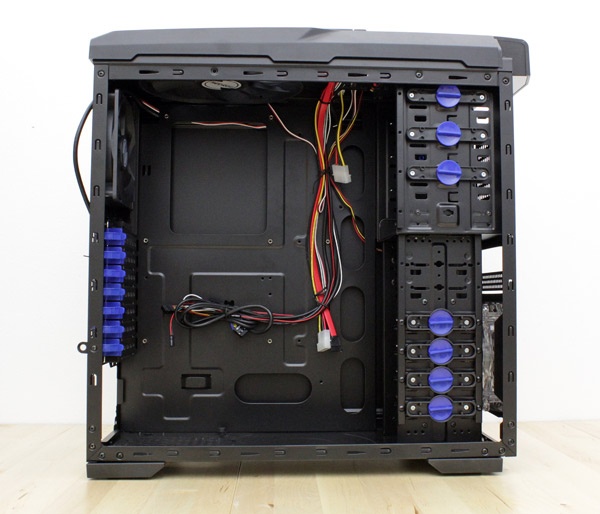
The picture shows that the TR300 EX has some nice room inside. The width of the case is enough for CPU coolers up to 16cm in height. The left side panel holds a 12cm fan, but it has been moved outside the case in a special panel add-on in order not to get in the way of taller CPU coolers. Our Cooler Master Hyper Z600 (16cm tall) fit like a glove, and you can also see that there are a few centimeters left between the CPU cooler and top panel fan.
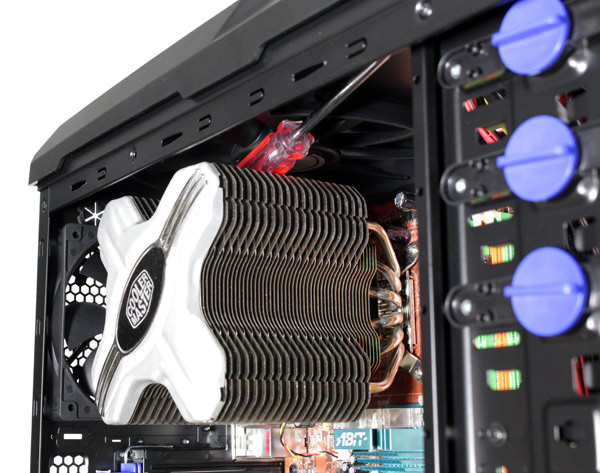
Although drive bays and brackets cannot be removed, the TR300 EX will take HD 6970 cards, which are 27cm long. Unfortunately, the longest card around, Radeon HD 6990 (30.7cm), will not fit due to the maximum allowed length of about 30.3cm.
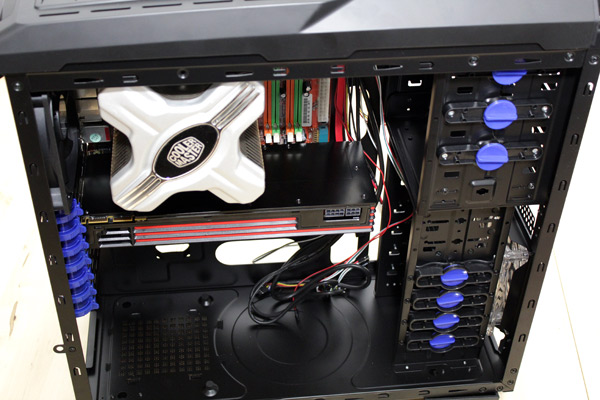
The metal motherboard tray features a CPU backplate cutout and there is plenty of room and holes for cable management.
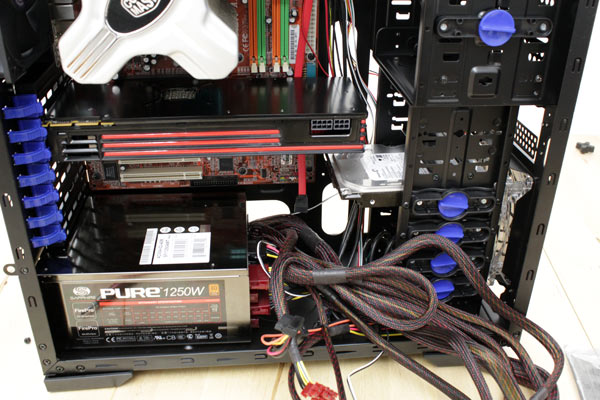
The backplate cutout could have been a bit bigger, since some motherboards’ CPU sockets are slightly moved towards memory modules.
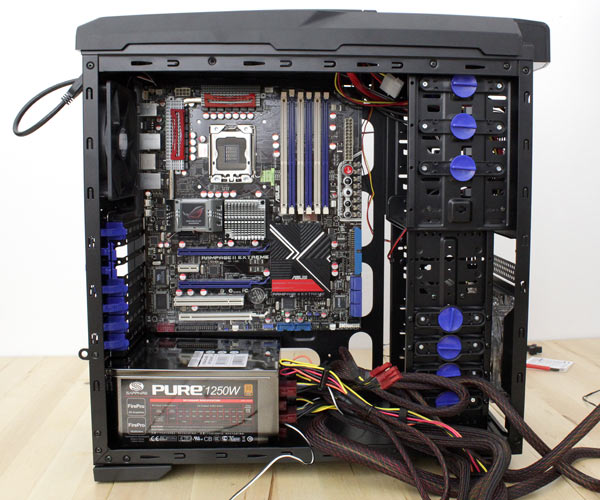
We had no trouble mounting Asus Rampage II Extreme mobo, which is an extended ATX board measuring 30.5cm x 26.9cm. As you can see from the picture, the holes for cable management are not blocked and can still be used. The backplate cutout was enough for easy CPU cooler mounting.
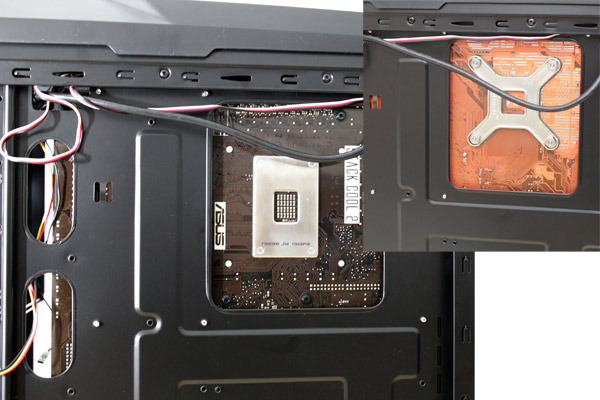
Hanjung included an extension 4/8 pin CPU power cable, which is a nice gesture since most PSUs don’t have a long enough 4/8 pin 12V CPU cable for it to be routed via the back of the case. The only thing that Hanjung could have done is to make the cable hole a bit wider. Note that you should route the cable before mounting the mobo.

We found three out of four fans connected to the controller, whereas the fourth fan (on the side panel) should be connected once all the components are in place. The fan controller is inside the case on the top panel and, as we said before, allows for two fixed modes of operation – fast or slow.
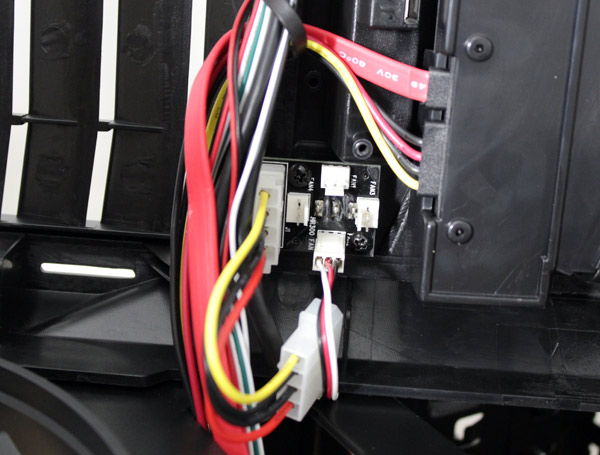
The plastic part of the top panel can be removed in case you decide you fans need cleaning.
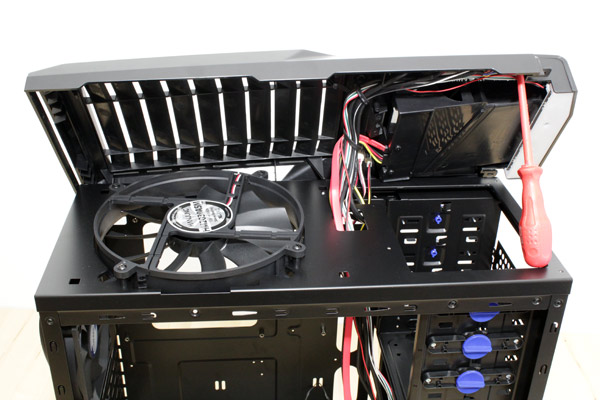
The front panel can also be removed, which you’ll have to do when mounting optical drives.
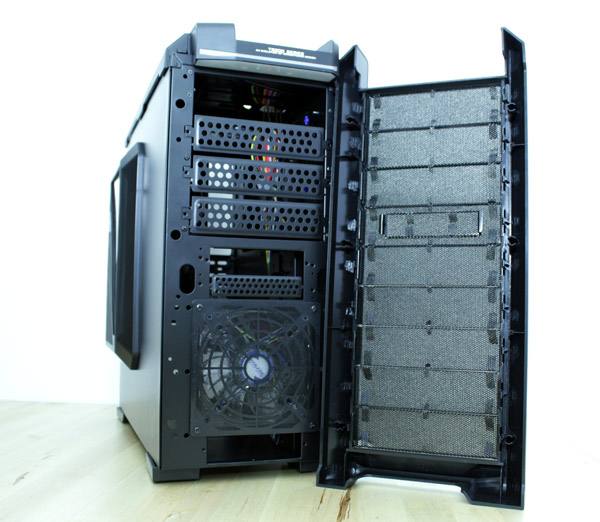
The front panel comes with foam filters behind the mesh grill face. The front panel fan has its own filter as well.
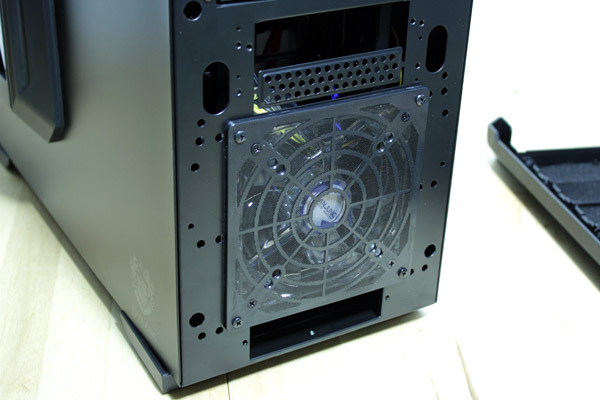
The TR300 EX has the following fans: 12cm HM1225CLS 12V 0.16A Sleeve Bearing on the front panel; 12cm HM1225ASL 12V 0.16A Sleeve Bearing on rear and side panel and 20cm HM2030ASM 12V 0.42A Sleeve Bearing on the top panel. The fans can be quiet or loud, depending on the operation mode. When slow, they’re almost inaudible although they’re not too loud in fast mode either.
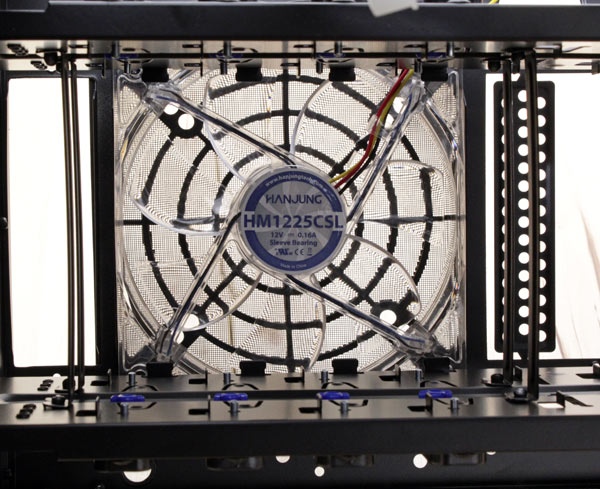
Almost all the 3.5’’ and 5.25’’ drive slots come with toolless fastening mechanisms, which secure both sides of the drive – a nice touch indeed. There are no anti-vibration grommets but we were more surprised by the fact that the 3.5’’ drive brackets have no room intended for 2.5’’ drives. One such drive can be placed in the hot-swap bay on the top panel or the adapter in one 5.25’’ slot.
The 3.5’’ drive cage is fixed and will take six drives, whereas the seventh one can be placed via the adapter in 5.25’’.
The PSU goes in the bottom of the case and is placed on rubber grommets. The TR300 EX will take the longest PSUs without problems.

Graphics or other expansion cards can be locked without using screws. Unfortunately, coolers of most of the cards we’ve tried prevented the mechanism from fully locking. Truth be told, the cards were secured nicely after all, but we’d still advise you to take them out in transport, or at least put in a screw just in case.
To be fair, there’s no better locking mechanism than the good old screw – so we’d rather have that solution than a half functional locking mechanism.



